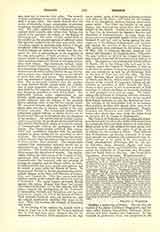

Chalcis, a titular see of Greece. The city was the capital of the island of Eubcea (Negropont), and has been called Eubcea, Stymphelos, Halicarne, Hypochalcis, and later Euripos, and Negropont. It was founded in prehistoric times, was prosperous in the tenth century B.C., and sent colonies as far as Macedonia and even Italy. From 506 B.C. to the reign of Alexander the Great it was alternately the ally and enemy of Athens. In 194 B.C. it fell into the power of the Romans. Justinian fortified it; the Arabs captured it in 880, but it was reconquered by the Byzantines, and during the Middle Ages its trade was extensive. It was captured by the Venetians in 1209 and by Mohammed II, July 12, 1470. Since 1833 it has formed a part of the Kingdom of Greece. Chalcis has today about 10,000 inhabitants. Lequien (II, 214) mentions eleven bishops of Chalcis from the fourth to the eighteenth century. The see was originally a suffragan of Corinth, then of Athens; finally it became an independent metropolis. The Greek titular bears today the double title “Chalcis and Carystia” (from Carystus). The Latin bishops bore in the thirteenth century the title of Negropont (Lequien, III, 845; Eubel, I, 384). On February 8, 1314, the see was united by Clement V to the Latin Patriarchate of Constantinople and remained so till the sixteenth century, when it was again independently established. Chalcis in Thrace was another see, suffragan of Heracleia (Lequien, I, 1149); its site has not been identified. A third Chalcis, known by the sojourn of St. Jerome, was a bishopric depending on Seleucia Pieriae in Syria Prima (Lequien, II, 785). This city is often mentioned in Jacobite documents under its native name Kinnesrin.
S. VAILHE

